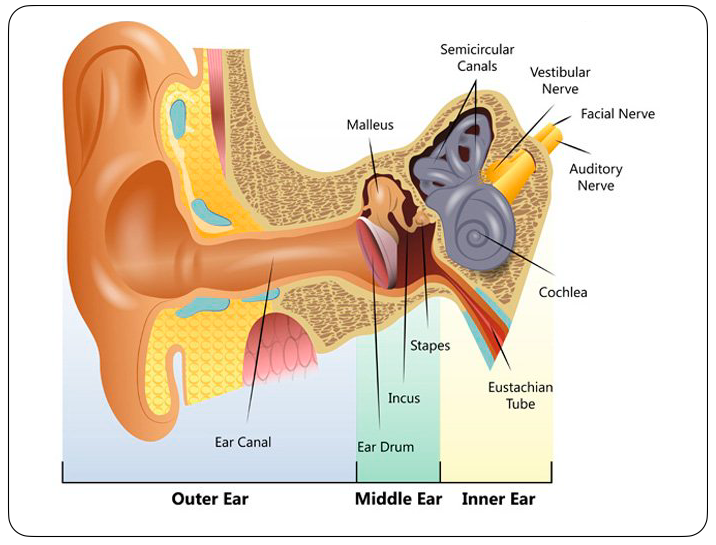083 - Hearing Loss
Hearing loss is not a one-size fits all condition.
Written by Madeleine Campbell
Hearing loss affects people of all ages and has numerous root causes, ranging from genetics to noise exposure to traumatic injury. As sound engineers, it’s no surprise that our job puts us at an increased risk. A typical concert can quickly surpass OSHA’s recommended guidelines for occupational noise exposure.
It’s not hyperbole to suggest that hearing loss is an increasing pandemic. According to the Hearing Loss Association of America, it impacts over 48 million people in the United States alone, nearly 20% of the population. Almost 30 million of those people could benefit from hearing aids.
But hearing loss is not a one-size fits all condition.
Our ears are divided into three sections: outer, middle and inner. Collectively, the outer and middle ear are known as the conductive system because it brings (conducts) external sound from the air to the inner ear. The cochlea of the inner ear and the auditory nerve are the sensorineural system, which transduces and encodes this sensory stimulus into a neural signal that our brain will process as sound. (This is a very abridged explanation of how humans hear!)
diagram from www.hearinglink.org
It makes sense that the three most prominent types of hearing loss are named for their area of impact. Conductive hearing loss stems from problems in the outer and middle ear - the pinna, the ear canal, the eardrum, the eustachian tube, or the ossicles, which are three tiny bones called malleus, incus and stapes. These are actually the three smallest bones in the human body. You may have heard them referred to as the hammer, anvil, and stirrup.
Common causes of conductive hearing loss could be as simple as an ear infection, allergies, or a build up of ear wax in the ear canal. It could also be more complex, like a ruptured eardrum or a hereditary disease like otosclerosis.
Sensorineural hearing loss (SNHL), the most common type, is caused by damage to the inner ear, often the hair cells of the cochlea, or the auditory nerve. Common causes of SNHL are aging, sustained noise exposure, head trauma, or autoimmune disease.
Mixed hearing loss is some combination of the two.
Severity of hearing loss is broken up into categories of mild, moderate, moderately severe, severe and profound, based on the individual’s thresholds of hearing, meaning the quietest stimulus they can perceive at a particular frequency.
Get real-world live sound mixing tips straight to your inbox.
Based on their root causes, we know that not all hearing loss is permanent. Luckily, we can recover from an ear infection and a blockage in the ear canal can likely be removed. But sustained noise-induced hearing loss (NIHL) causes physical damage to the hair cells of our ears that cannot be reversed.
Most people have experienced some extent of a temporary hearing loss, often paired with tinnitus, after experiencing high sound levels. (I remember the first time I saw the band Lightning Bolt play when I was in high school — without earplugs — and everything sounded like I was underwater for the next two days.) This short-term change to our hearing sensitivity is called a temporary threshold shift. The greater the intensity or duration of the noise exposure, the greater the temporary threshold shift will be. This also equates to a longer recovery time. When our hearing sensitivity does not return to normal, this is called a permanent threshold shift.
The CDC states that almost 40 million adults in the United States experience some degree of NIHL. Again, while it is preventable, sustained NIHL is not reversible. That said, even short instances of excess noise exposure are bad for our auditory health.
NIHL does not impact the frequency spectrum evenly. High-mid frequencies, typically around 4000Hz, are often the first to be dampened. As hearing loss intensifies, this spectral notch widens, impacting more and more surrounding frequencies. The significance of this cannot be overstated for live sound engineers — reduced sensitivity to high-mids will have a huge effect on our perception of our mixes!
While we can’t repair the damage, we can take preventative measures to ensure the health and safety of our hearing. First and foremost, wear ear protection. It’s non-negotiable. Keep up with educational initiatives like H.E.A.R. (Hearing Education and Awareness for Rockers) and organizations like MusiCares, which offers semi-regular hearing clinics around the country with free fittings for custom ear plugs. Make an appointment with an audiology clinic near you. Many clinics affiliated with universities offer sliding scale or low cost hearing evaluations. Impose responsible dB limits when mixing front of house and monitors, especially IEMs.
Our ears are our most valuable tool. In order to protect and preserve our hearing, we must take care of them. Your ears and clients will thank you.


